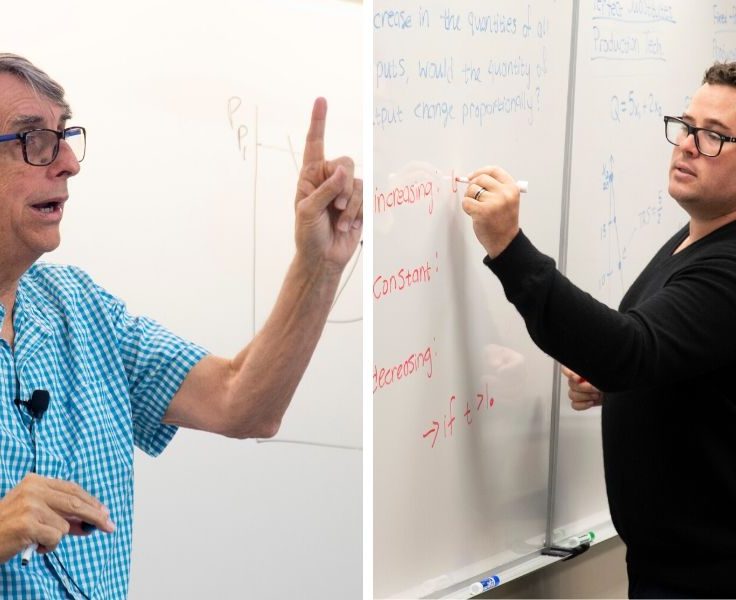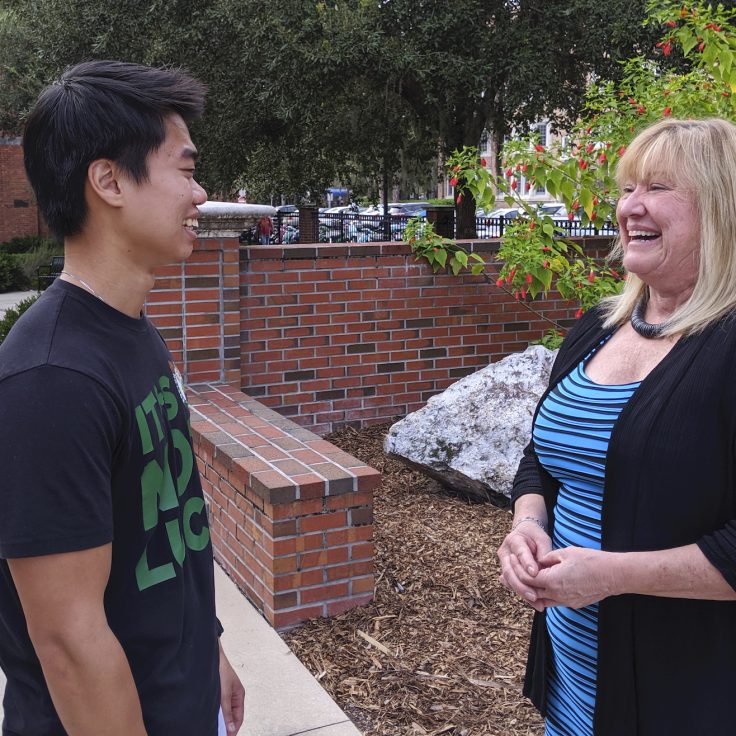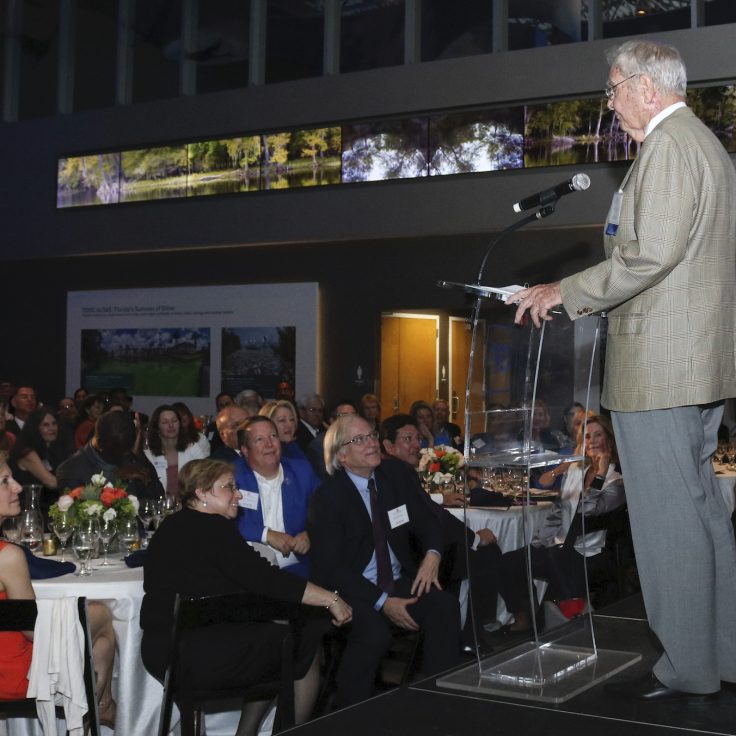News
Reimagining the Humanities
Now in its second decade, the Center for the Humanities and the Public Sphere is bringing disciplines together to tackle grand-challenge questions.
The Odd Couple of Economics
Evening of Excellence honoree Mark Rush and economics chair Thomas Knight have a irreverant — and competitive — rapport.
How Can We Change Healthcare? Build Better Doctors
Professor Laura Guyer helps students tackle health disparities with a rapidly growing minor.
Taking Stock of the Future at a Beyond120 Internship
A summer internship sponsored by the College of Liberal Arts and Sciences experiential learning program provided two students with new perspectives and job offers.
Lessons from Hurricanes Past
With the help of digital technology, UF professor Ken Sassaman plans to bring the history of a devastated town to the present.
Ari Luxenberg ’03 is Living His California Dream
This UF alumnus took a big risk to see if he could make it in Hollywood.
Hearing Their Voices
Discover how UF's English Language Institute helped a student from Togo achieve her academic goals.
Where History Happened
History professor Sean Adams led a group of educators on a historical tour across Florida and Alabama to learn more about the Civil War.
Amy J. Galloway (’81, JD ’85) Began a Lifetime of Learning at UF
A successful alumna made sure her college education was more than just a steppingstone toward law school.
Evening of Excellence 2019 Honorees
The annual Evening of Excellence shines a spotlight on those who make the College of Liberal Arts and Sciences an essential part of UF.
Petty Disputes, Serious Study
Professor of Linguistics Diana Boxer put Thanksgiving quarrels to good use in a new study focused on bickering.
2020 College Teaching/Advising Award Winners Revealed
The college-wide awards honor those who make a difference in students' lives.










